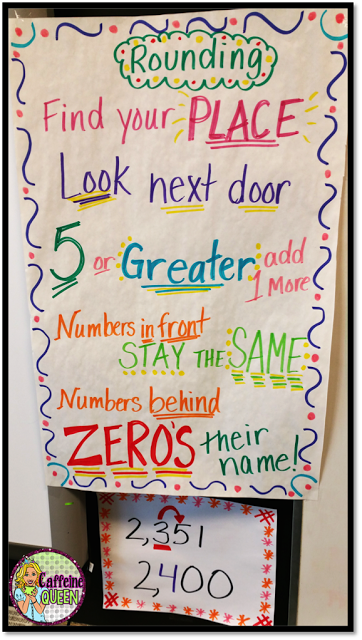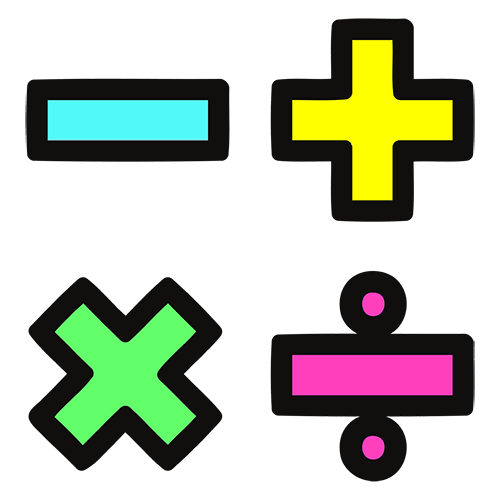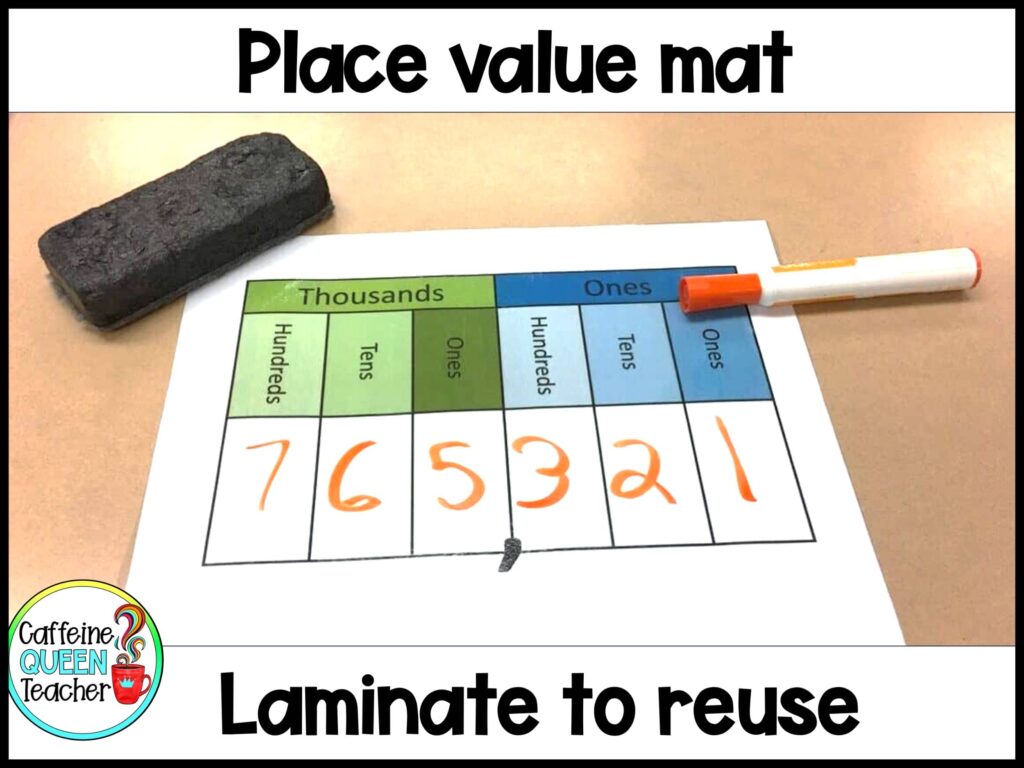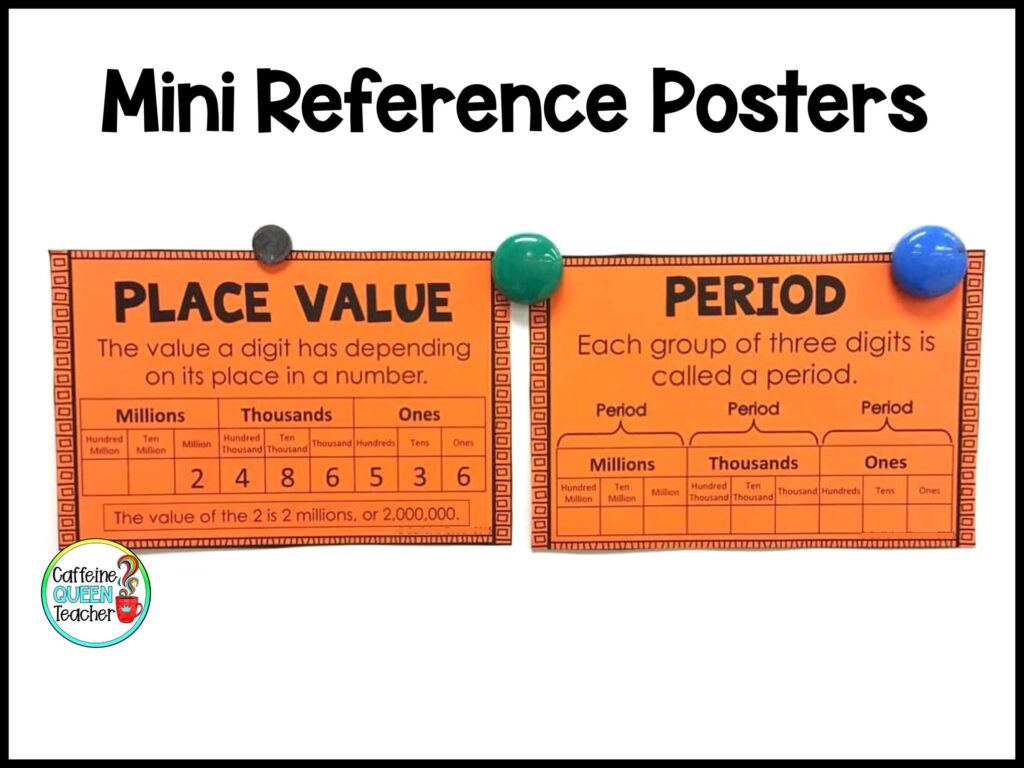I love this rounding anchor chart for upper elementary classrooms. My students reference it a lot as we’ve been reviewing place value and number sense during math. I hear them reading and repeating the rounding poem at random times during the day – not at all bad!
The Rounding Anchor Chart
 |
| Rounding Anchor Chart |
Making the anchor chart with your students is a great mini-lesson and loads of fun if you feel comfortable creating it on the fly.
I often cheat – I usually sketch out an outline or idea of how I’ll set up my anchor chart ahead of time (I’m not known for being creative or artistic!), and I feel better about designing the anchor chart while students are watching. Sometimes, I already have the main ideas and words written on the chart, and I simply add details and “flair” (doodles!) while students are talking.
My anchor charts stay up for the entire unit, allowing students to reference them whenever needed. My students and I discuss and practice the words and meaning together so that students truly understand what they’re reciting. It’s easy to forget that there are a lot of steps to rounding, and this anchor chart helps students remember.
Teaching and Reviewing Place Value
To help students understand place value, we introduce them to the place value chart. The place value chart represents how digits in a number have different values depending on where they’re located.
Place Value Games and Activities
Games are a great way to teach students place value and make math lessons fun.
My favorite game to play with students is to have number cards with digits 0 – 9 written on them. There should be multiple cards of the same digits. After shuffling the cards, turn several cards face up. Students race to make the largest or smallest number they can using only those digits on the cards. Vary the number of cards depending on the skill of your students. It’s an engaging activity kids love and improves their critical thinking skills.
You can also use task cards for games and centers.
You’ll find the printable pages in this article in my Place Value and Rounding Set on Teachers Pay Teachers.
Using Manipulatives
Manipulatives are a concrete way for students to understand place value. For example, you can put together blocks in various colors to represent each place value. Teach kids to see a block of ten as a ten-rod and a block of a hundred as a hundred-flat. This way, students can visualize the concept in real life, a real-life representation that helps them remember the concepts better.
Another idea is for students to identify units, tens, and hundreds using concrete examples such as money, number of pencils, buttons, or candy. Start with the smallest, the unit, and let students work their way to the highest, the hundreds.
Practice, Practice, Practice!
Like all learning, practice is so important. Include a variety of place value activities during your math class. Work through a book of practice problems on whiteboards, do some interactive online activities, or practice place value with games. Repetition reinforces the students’ learning and helps them gain mastery over place value concepts.
Teaching place value can be challenging, but students can catch on quickly with patience, activities, and manipulatives.
I hope you found some tips to help you teach place value to your students.
Best wishes!










